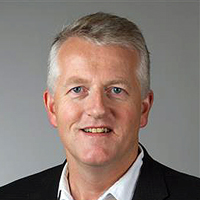
Surplus heat from waste incineration and industrial activities accounts for half of the energy sources in the district heating supply in Norway. The picture is from Trondheim Heating Center.
Mythbusting: "Burning waste to produce district heating is not climate-friendly"
Surplus heat from waste incineration is the largest energy source for district heating in Norway. So this cannot be particularly climate-friendly, or can it?
Svein Ove Slinde, CEO of Statkraft Varme, responds to claims about district heating.
1. "Burning waste to produce district heating is not climate-friendly."
Answer: First and foremost, waste is not burned primarily to produce district heating. Dumping waste in landfill sites was banned in Norway in 2009, and waste incineration is part of the national waste management system. Everything that cannot be reused or recycled is delivered to an incineration plant that ensures proper final treatment through stringent requirements for flue gas cleaning. Here, unwanted environmental gases are taken out of circulation, and the energy is recovered and delivered to district heating. Incineration with energy recovery results in a significant reduction in greenhouse gas emissions compared to the alternative, which is landfills.
District heating plants utilise the surplus heat from waste incineration to provide warm water and heating to homes, schools, hospitals, commercial premises and industrial buildings. In this way district heating plants make use of resources that would otherwise go to waste.
2. "District heating depends on us generating more and more waste at a time when we have to lower our consumption."
Answer: As long as we as a society have waste that must be incinerated, it makes sense to use the surplus heat. In Norway today, surplus heat from waste incineration accounts for slightly less than half of the energy sources used for district heating. Surplus heat from industrial plants, biofuel, biogas and off-peak electricity are other sources that can be used. This makes district heating a flexible and robust system that can at any given time utilise various energy sources and surplus heat in society.
The next generation of district heating, which operates at lower temperature levels than currently, will also be able to utilise waste heat from, for example, data server parks and freezing plants.

3. "New buildings produce their own energy and do not need district heating."
Answer: It is positive that the construction industry is constantly evolving and reducing our collective energy needs. However, a building with an annual surplus of self-produced heat will not maintain this surplus throughout the year. There are opportunities here in the interaction between buildings and district heating networks to exchange energy. Although energy efficiency is improving in new and existing buildings, high densities provide a good basis for district heating in urban areas.

4. "District heating is a costly dead end on the road to the electrified society."
Answer: If climate targets are to be met, the electrification of society is necessary, based partly on increased production of renewable energy from wind and solar power. District heating can play an important role through closer interaction between the thermal system and the power system. By meeting the need for heating and cooling, district heating can allow other energy needs to be met with electricity without increasing the power supply to the area in question.

5. "Norwegian hydropower produces more clean energy than we need, so district heating systems are superfluous."
Answer: We cannot look at Norwegian hydropower in isolation. Norway is part of the Nordic power market, where more than half of the energy comes from fossil sources. In other words, there is a need for more renewable energy in this market.
Although electricity in Norway mainly comes from renewable sources, almost half of our total energy needs are met by fossil sources, for example for transportation. The electrification of society will require more renewable energy.
The district heating network takes some of the load off the electricity grid since district heating is a flexible system that can use various types of energy sources.

Svein Ove Slinde
Svein Ove Slinde is managing director and head Silva Green Fuel.
Facts about Statkraft Varme
- Statkraft Varme is the district heating company in the Statkraft Group. Statkraft Varme has been involved in energy recovery and district heating since 1982, has more than 100 employees in Norway and Sweden and produces over 1 TWh of district heating annually.
- Statkraft Varme is licensed to develop and operate district heating in several major cities and towns in Norway and Sweden.
- The company aims to provide customers with an environmentally-friendly and energy-efficient supply of district heating. Statkraft Varme also wishes to contribute to the positive development of district heating through research and development and innovative solutions, preferably in cooperation with local participants.
More mythbusting ...

Mythbusting: "Electric cars are no more climate-friendly than ordinary cars!"
An electric car that uses electricity from clean, renewable sources produces no greenhouse gas emissions. A petrol-powered vehicle emits on average two tonnes of CO2 each year, yet some people still...
Read more

Mythbusting: "Power companies are only concerned with profit!"
Owners of solar and wind power plants produce energy when the sun shines and the wind blows – regardless of price and demand. Hydropower companies with large reservoirs can control production to a...
Read more

Mythbusting: "Production of biofuels displaces rainforests"
Did you know that most of our cars are already using biofuels? But how sustainable and climate-friendly are biofuels actually? It depends on the raw material used to produce the biofuel.
Read more

Mythbusting: "Burning waste to produce district heating is not climate-friendly"
Surplus heat from waste incineration is the largest energy source for district heating in Norway. So this cannot be particularly climate-friendly, or can it?
Read more